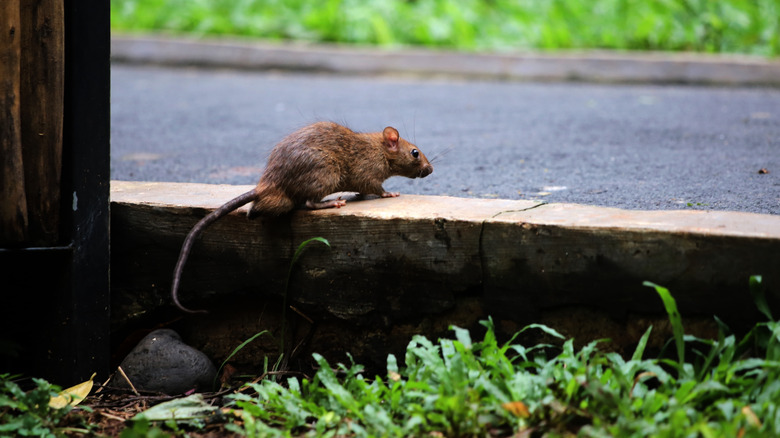Have Rats Invaded Your Neighborhood? Here's How To Tell (& What To Do)
Rats are an unfortunate reality that can affect just about any neighborhood across the United States. These species include the ubiquitous roof and Norway rats. Not only can rats carry harmful diseases, but they also have the capability of causing some serious damage to your home and garden. It's essential to be aware of an active rat infestation in your neighborhood so you can address the issue before it reaches your own home. You'll also want to understand the reasons why you may have a rodent problem. If you're seeing signs of rats around your property, this is a first clue that these rodents may be present in your neighborhood at large, and it's a problem that requires immediate action. Since the signs of rats usually appear before you see the rodents themselves, spotting wayward rats around your home or neighborhood, unfortunately, means the problem is already severe.
The two most common signs of a rat infestations are droppings and gnaw marks. These can be difficult to spot around the neighborhood at first, but can often occur together if rats are active in a particular area. If you start seeing raisin-sized droppings when walking around your neighborhood, chances are that rats might be around. You might even see them snagging bird seed, fallen fruit, or garbage, especially at night when they're most active. It's even possible to see gnaw marks on outdoor furniture or drywall. Once rats have taken up residence in a home and multiplied, you also might hear them scratching and walking around the attic at night — it's even possible to witness this at a neighborhood gathering in severe cases.
What to do if you see signs of rats around your neighborhood
If there's a known rat invasion in your neighborhood, it's time to take steps to prevent them from seeking sources of food and shelter on your property. Clean up pet food, bird seed, fruit, and unsealed trash cans outside your home. Leaving such items outdoors overnight can inevitably invite rats to hang out in your yard or garden. Seal any possible openings around your home to prevent indoor access for rats looking for further food sources and shelter. Removing any piles of leaves, wood, or mulch from your yard can help prevent nesting activities, too. Also, if you see any of the aforementioned red flags of rodent problems around your home, these are definitely signs it is time to call in the professionals for a rat infestation.
Unfortunately, it can be difficult to tell if a neighbor has a rat infestation unless you happen to be at their home and spot some of the signs directly. For this reason, communication about rat issues is paramount to preventing more widespread invasions. It can be admittedly uncomfortable to talk about rat issues due to their historically negative stigma and associations with uncleanliness. However, giving your neighbors a heads up about spotting any signs of rats around their home (or your own) is an important first step. Since rat infestations aren't usually isolated events, communicating about these types of problems can increase the likelihood of neighborhood-wide management strategies to help tackle the issue. Depending on the scope of the infestation, solutions can involve getting rid of rats humanely, but may also require more direct measures, too.

